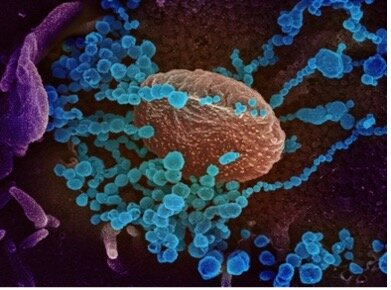
Disciplines of Oral Biology

Cell Biology
Cell biology involves the study of composition, structure and interactions of cells, physiological properties, organelles they contain, interactions with their environment, life cycle, division, death, and cell function on a microscopic and molecular level.

Oral Microbiome
The oral microbiome is comprised of 700 prevalent taxa, with distinct subsets predominating at different habitats. It is a most complex microbial community and is an important part of the human microbiota. Extensive characterization by cultivation and culture-independent molecular methods along with metabolites of oral microbiota grades the systemic status of the individual.

Oral Immunology
The oral immune system is maintained by various lymphoid tissues in the head and neck region. A variety of oral immune disorders such as infection, allergic disease and autoimmune disease are induced by dysfunction of the oral immune system. Multiple approaches will be done to assess the precise mechanism of the disease onset.

Sensory Neuroscience &
Orofacial Pain mechanisms
Sensory neuroscience explores the functional organization and neurophysiology of the nervous system, providing a neurobiological framework for understanding human behavior. Experimental studies using physiological, pharmacological, and psychophysical methods corroborate pain mechanisms well.

Bone Biology
Bone biology deals with the anatomy, physiology, and biomechanics of hard tissues. Experimental work related to functional perspectives in bone biology is key to understanding disease mechanisms and therapeutic strategies.

Craniofacial Development & Ontogenesis
Mechanical and molecular interactions between cells and tissues, their environment occur in an intricate manner in craniofacial region. Coordinated movement of reciprocal interactions determines the facial proportions, abnormal mesenchymal patterning during craniogenesis. Experiments to advance understanding of the complexity of craniofacial development aid to open new perspectives for future research.

Salivary Diagnostics
Saliva offers the capability to assess physiological states, detect morbidity initiation and progression, and monitor post-treatment therapeutic outcomes through a noninvasive approach is one of the most desirable goals for healthcare research and delivery. Saliva, a multi-constituent oral fluid, has high potential for the surveillance of general health and disease.
Biomaterials
Biomaterials are natural or synthetically made of multiple components that interacts with biological systems. Biomaterials are vital in medical applications to augment or replace a natural function. Synthesis, processing, characterization, and testing of biomaterials for implants and prosthetic devices, bioactive and cell instructive materials, nanostructured biomaterials and nanoparticles, scaffolds for tissue engineering, biomedical coatings and antibacterial surfaces, materials for drug delivery carriers, tissue/biomaterial interfaces, are crucial in clinical applications of biomaterials.

Biomechanics - TMJ
Kinematics of Jaw Movements, muscle dynamics and jaw motion are time/chewing cycle dependent. Analysis of chewing patterns demonstrates different pathways during oral processing. Biomechanical responses of the oral mucosa - static, dynamic, volumetric and interactive responses in terms of linear and/or nonlinear elasticity physiological reactions of the oral mucosa to occlusal loading, including the histological changes and biochemical reactions are key while planning for restoration of the orofacial region.

Tissue Engineering
Clinical application of engineered tissue or regenerative materials are in dire demand. Intelligent biomaterials for tissue regeneration and stem-cell differentiation that allows automatic cell expansion are crucial in management of several disease states. Engineered tissue chips and microfabricated tissue-engineered models play a key role in management of cancer. It also offers the probability of personalized/precision regenerative and theranostic medicine approaches.









